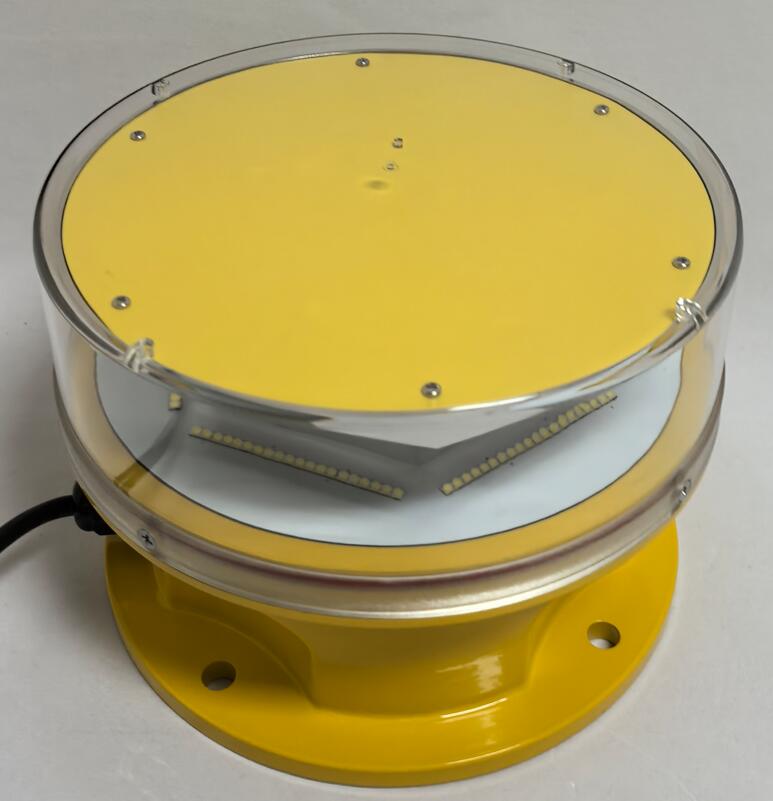Aviation Light Wind Turbine Systems: Illuminating the Path to Safer Skies
As wind energy expands globally, wind turbines are becoming increasingly common features in both rural and coastal landscapes. While these structures contribute to sustainable energy production, their towering heights pose potential hazards to low-flying aircraft. Aviation light wind turbine systems are essential for ensuring these renewable energy installations do not compromise aviation safety. This article examines their purpose, regulatory requirements, technological advancements, and future trends.
The Critical Need for Aviation Lights on Wind Turbines
Wind turbines often exceed 150 meters (492 feet) in height, placing them directly in the flight paths of helicopters, small aircraft, and even commercial planes during takeoff and landing. Without proper lighting, these structures could become invisible obstacles, especially in poor weather or nighttime conditions.
Key reasons why aviation light wind turbine systems are indispensable:
Collision Prevention – Ensures pilots can identify and avoid wind farms, reducing mid-air accident risks.

Regulatory Compliance – Aviation authorities mandate lighting on turbines to meet international safety standards.
| aviation light wind turbine |
Enhanced Visibility in Adverse Conditions – Fog, rain, and low light significantly reduce visibility; aviation lights mitigate these risks.
Protection for Low-Altitude Flight Operations – Emergency medical helicopters, agricultural aircraft, and military flights often operate at altitudes where turbines pose a threat.
| aviation lights wind turbine |
Types of Aviation Lights Used on Wind Turbines
Different lighting configurations are applied based on turbine height, location, and air traffic density. The primary categories include:
1. Low-Intensity Aviation Lights (L-810)
Used for turbines below 150 meters (492 feet) in low-traffic areas.
Typically red, steady-burning lights.
Common in small wind farms away from major flight paths.
2. Medium-Intensity Aviation Lights (L-864)
Required for turbines between 150 and 500 meters (492–1,640 feet).
Red or white flashing lights for better daytime visibility.
Often installed in offshore wind farms or near regional airports.
3. High-Intensity Aviation Lights (L-856)
Used for turbines exceeding 500 meters (1,640 feet) or those near major airports.
Bright white strobes for maximum long-range visibility.
Essential for large-scale wind energy projects in busy airspace.
4. Dual Lighting Systems
Combine red lights for nighttime and white strobes for daytime.
Ensures 24/7 visibility while minimizing light pollution.
Regulatory Standards for Wind Turbine Lighting
To maintain aviation safety, international and national agencies enforce strict guidelines for aviation light wind turbine installations. Key regulatory bodies include:
ICAO (International Civil Aviation Organization) – Sets global standards for obstacle lighting.
FAA (Federal Aviation Administration, USA) – Defines height-based lighting requirements.
EASA (European Union Aviation Safety Agency) – Oversees compliance in European airspace.
Common regulations include:
Mandatory lighting for turbines above a certain height.
Specific flash patterns to distinguish wind farms from other obstacles.
Redundancy systems to ensure lights remain operational during power failures.
Technological Innovations in Wind Turbine Lighting
Modern aviation light wind turbine systems leverage cutting-edge technology to improve efficiency and reliability:
LED Lighting – More durable, energy-efficient, and longer-lasting than traditional bulbs.
Radar-Activated Lighting (ADLS) – Lights activate only when aircraft are detected, reducing light pollution.
Solar-Powered Systems – Ideal for remote wind farms with limited grid access.
Remote Monitoring & Diagnostics – Real-time alerts for maintenance teams if lights malfunction.
Challenges and Future Developments
Despite their effectiveness, aviation light wind turbine systems face challenges:
Light Pollution Concerns – Nearby communities often complain about flashing lights; solutions like ADLS help.
Maintenance Logistics – Turbines in offshore or remote locations require specialized servicing.
Extreme Weather Resilience – Lights must endure high winds, lightning, and saltwater corrosion.
Future advancements may include:
AI-Powered Predictive Maintenance – Machine learning to detect and address failures before they occur.
More Eco-Friendly Designs – Increased use of solar and low-energy lighting solutions.
Enhanced Durability – New materials to withstand harsh environmental conditions.
Aviation light wind turbine systems are a vital component of modern renewable energy infrastructure, ensuring that the growth of wind power does not come at the expense of aviation safety. With evolving technology and stringent regulations, these lighting solutions continue to improve, balancing visibility for pilots with minimal environmental impact. As wind energy expands, the role of aviation light wind turbine systems will remain crucial in maintaining safe skies for all aircraft.
